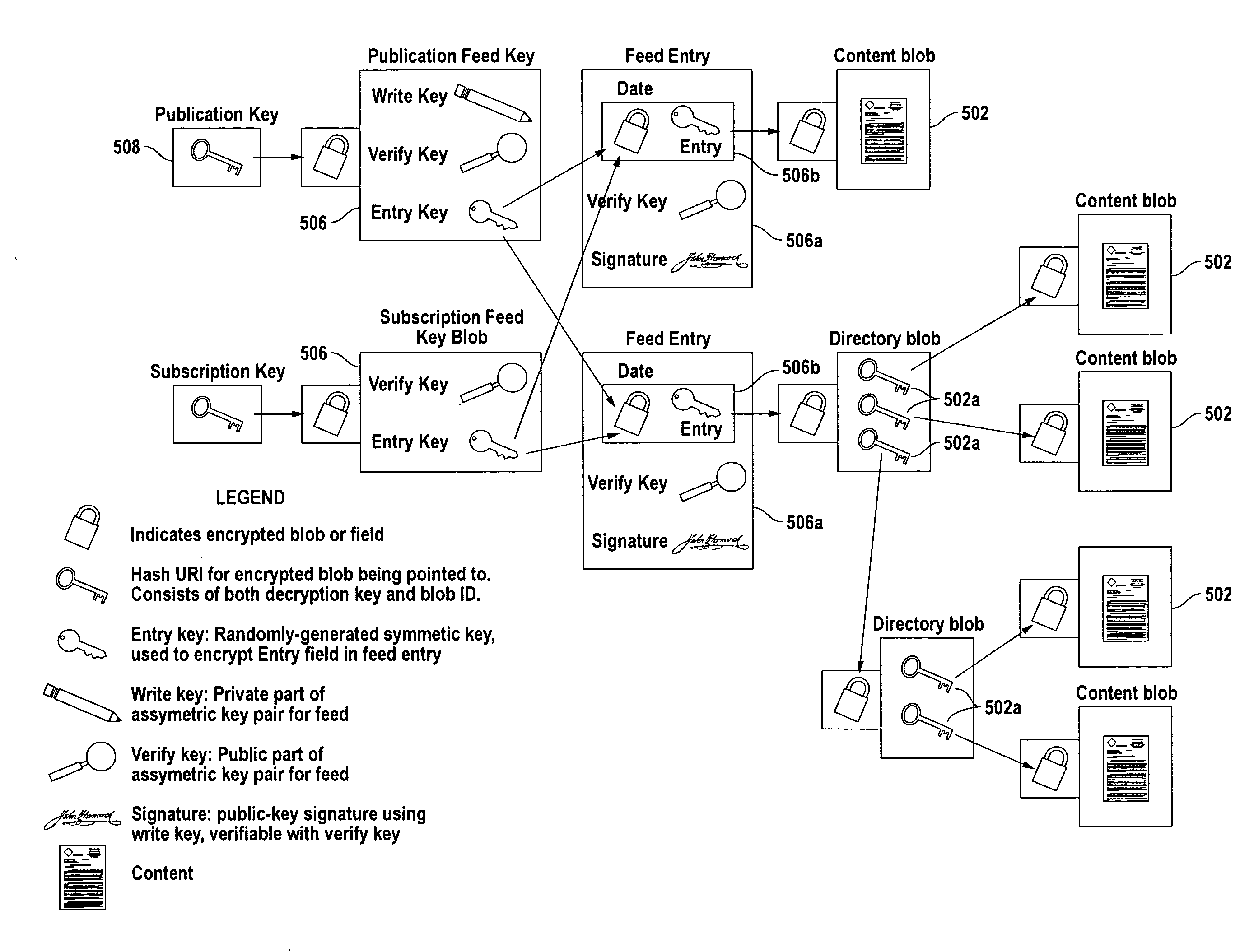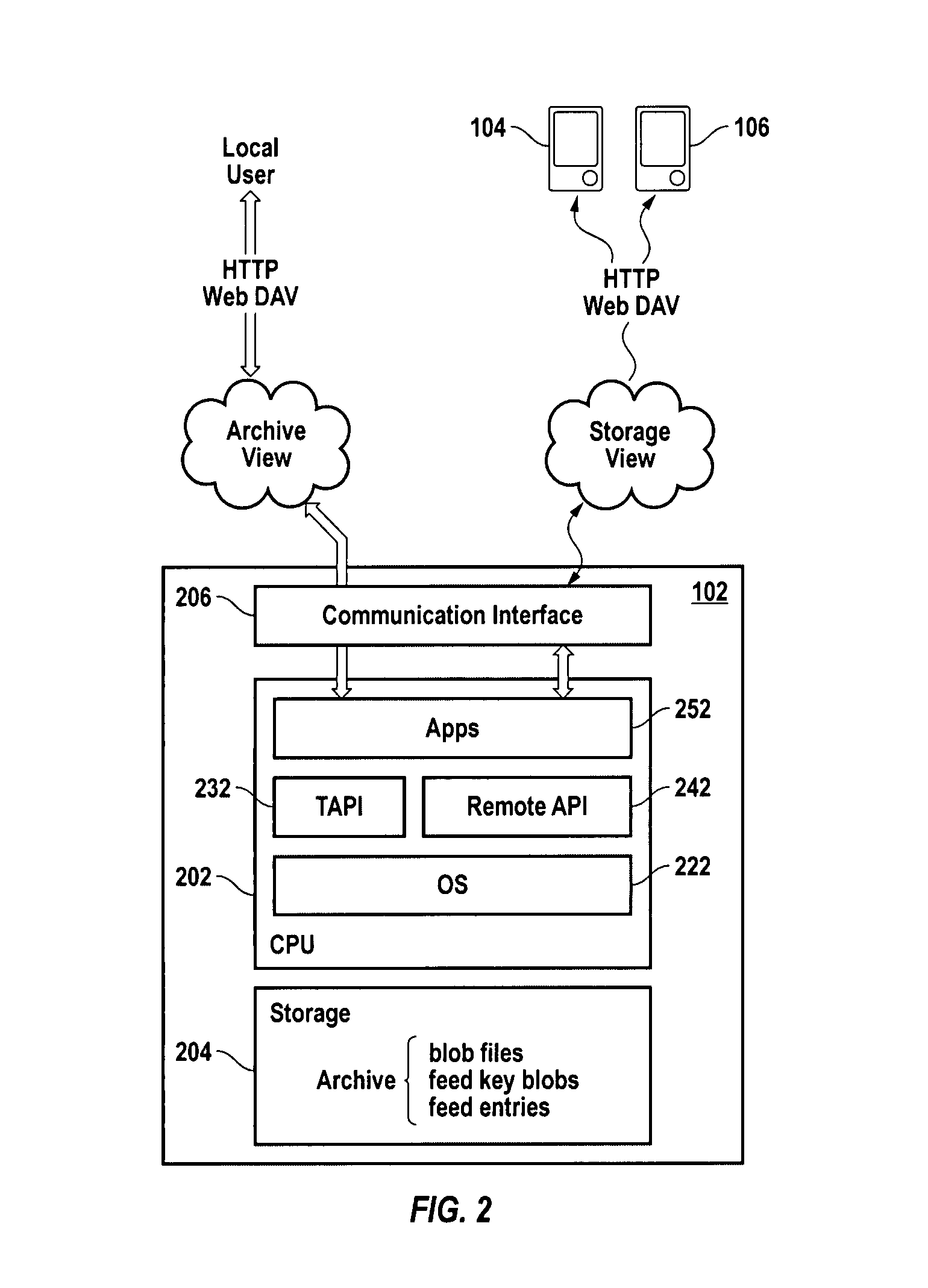Secure pre-caching through local superdistribution and key exchange
a secure pre-caching and local superdistribution technology, applied in the direction of digital transmission, program/content distribution protection, instruments, etc., can solve the problems of partitioned or no network access, difficult infrastructure maintenance, more difficult,
- Summary
- Abstract
- Description
- Claims
- Application Information
AI Technical Summary
Benefits of technology
Problems solved by technology
Method used
Image
Examples
Embodiment Construction
[0053]The present invention has been reduced to practice by the inventors and is referred to hereinafter generally as Makyoh. A prototype version of the Makyoh personal server has been implemented on a Java-based server. Encryption, storage, versioning, digital-signature functions, peer-to-peer distribution and server discovery have all been implemented.
I. Overview
[0054]Makyoh provides robust and secure document storage and document sharing without needing any of the conventional infrastructure, as described above for example. It is robust without requiring dedicated servers, scheduled backup or even a reliable network, and it is secure without the need for account passwords, firewalls or secure server rooms. In accordance with an embodiment of the present invention, to an end user (and his applications), a Makyoh archive appears to be a local disk (actually a locally-running WebDAV server, what is sometimes called a Web Folder). Once the user has entered his passphrase to unlock th...
PUM
 Login to View More
Login to View More Abstract
Description
Claims
Application Information
 Login to View More
Login to View More - R&D
- Intellectual Property
- Life Sciences
- Materials
- Tech Scout
- Unparalleled Data Quality
- Higher Quality Content
- 60% Fewer Hallucinations
Browse by: Latest US Patents, China's latest patents, Technical Efficacy Thesaurus, Application Domain, Technology Topic, Popular Technical Reports.
© 2025 PatSnap. All rights reserved.Legal|Privacy policy|Modern Slavery Act Transparency Statement|Sitemap|About US| Contact US: help@patsnap.com



